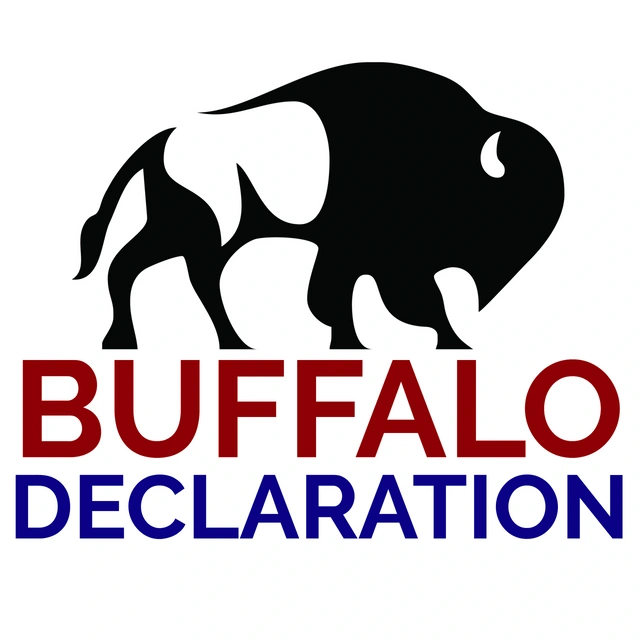Written By Amiel Pion, Posted on February 26, 2020

Alberta and the rest of Western Canada face an existential crisis, and the options lay bare. The West can languish in subjection to the Laurentian elites or defend its dignity and demand independence. The former is an unattractive option, following the unfortunate withdrawal of Teck Mine’s regulatory application; however, the latter appeals to Western Canadians yearning to break free from the yoke of Central Canada. To finally be recognized as an equal partner of Confederation.
Recently, four Albertan MPs brought forth The Buffalo Declaration, listing their grievances towards the federal government. From the cultural divide to unfair representation and the lack of economic autonomy, Alberta has a bone to pick with Central Canada.
“Throughout Alberta’s history, we can see several distinct cultural themes. A struggle against a colonial government, a desire for individual freedom, a willingness and drive to achieve personal economic liberty; a deep connection and respect for our land; and an economy unique to other areas of Canada.”
According to Dr. Randy Royer, “The West would benefit from greater autonomy and self-reliance, as well as a bottom-up government. The colonial mentality of Central Canada represents a key divergence between the different Canadas.”
The pillars of this foundation come from the settlers like the Hungarians, Romanians, Ukrainians, Dutch, Germans, Scots, Chinese, and Icelanders who immigrated to Alberta for better economic opportunities and the chance at religious freedom. Wildred Laurier described these settlers eloquently, stating, “let them look to the past, but let them also look to the future; let them look to the land of their ancestors, but let them also look to the land of their children.”
Western Canada was found on the principles of hard work, equality of opportunity and freedom against tyranny. “Persecuted individuals like African Americans, Jews, Mennonites, and Mormons sought refuge and opportunity in Alberta.”
“The first wave of settlers from Europe came here, for the same reason that people came to the Midwest of the United States,” says Dr. Royer. “To enjoy the fruits of democracy, (religious) freedom, and a chance to get ahead by embracing the entrepreneurial spirit indigenous to the region.”
“But let’s not forget, that that entrepreneurial spirit was and remains a fundamental component of many First Nations and Métis today. They were ardent defenders of such, notably, Louis Riel, who fought against MacDonald’s National Policy and defended western interests in the Red River Rebellion. He is a hero to many.”
“The National Energy Program (NEP) remains an old stain on the relationship between the federal government and the people of Alberta. At a time when wealth, opportunity, and political influence was thriving in Alberta, the first Prime Minister Trudeau took it upon himself to attack the natural resource sector in Alberta with destructive force. When Alberta Premier Peter Lougheed asked why Ontario-based manufacturing products were sold to Albertans at tariff-protected prices, while Alberta oil was being sold to Ontarians at half the going rate, no justification was given. The government of the day unapologetically displaced billions of dollars in investment, which forced Albertans from their homes, bankrupted businesses, destroyed livelihoods, led to suicides and set the province back for a generation.”
A federalist system ought to be checked and balance the will and wishes of both the federal and provincial governments. The former has violated its responsibility by controlling and dictating the latter’s sphere of influence. Under section 92 of the British North America Act of 1867, any natural resource is under the jurisdiction of the provincial governments. Commerce and trade are regulated under the supremacy of the federal government. Nevertheless, any resources ought to remain the property and protection of the provincial government. The National Energy Board is and ought to be seen as unconstitutional.
London Conference, 1866.
The bilingual program led to dislocation and loss of potential Western Canadian judges, and the vacuum is replaced by central Laurentian bilingual judges, which does not represent and look upon any regional interest outside Ontario and Quebec.
Canadian nationalism should not be defined by the simplicity of the duality of two founding races but made up of a pluralistic society. The duality is an old foundational myth by the Laurentian elites. Modern Canada is a mosaic of Filipino, Chinese, Indian, English, Scots, Irish, Nigerian, Polish, Ukrainian, Jews, First Nations, Métis, Inuit and French. The present form ought to accommodate different regional differences.
Constitutional reform ought to happen or risk the disunity and to avoid national crises. The remedy is “balance representation in Parliament to ensure unique regional interests, like those in Alberta, are safeguarded. Whether it be through Senate reform or otherwise, we must balance the current representation by population with an elected element of regional representation to create fairness in the federation and ensure all parts of the country know their voice will be heard no matter who is in power.”
To finally recognize Alberta and Western Canada, as a culturally distinct region and to admit past mistakes by the Federal government to the ill’s committed by the (NEP) against Alberta.
The recognition for the equality of Western provinces is only remedied to the disease that is plaguing our once-great confederation.
Very well presented. Every quote was awesome and thanks for sharing the content. Keep sharing and keep motivating others.